#Arundo donax
Explore tagged Tumblr posts
Text
youtube
Louis Durey (1888-1979) - Trio per Oboe Clarinetto e Fagotto
1) Animé 2) Lento 3) Très animé
Arundo-Donax Ensemble
3 notes
·
View notes
Text
every time i'm prepping for an outdoor gig i try using the legere reeds, and every time i decide to just suck it up and deal with whatever my normal reeds throw at me, because the legere just don't have the response or the strength i need. even on the harder one, the open E sinks and the high range is strained and they just lack a sweetness you get from real arundo donax. and it's a damn shame that i can't use them for their main purpose, especially since they were so goddamn expensive
#complaining like it's my job#classical music is a harsh mistress#bassoonery#reedmaking is a big deal okay
3 notes
·
View notes
Text
En defensa de la caña de río, tras su condena
Por Pedro Costa Morata Ingeniero, periodista y politólogo. Ha sido profesor de la Universidad Politécnica de Madrid. Premio Nacional de Medio Ambiente. Así, de pronto, como suele suceder con los grandes descubrimientos de la Historia, se ha extendido que la caña de río (Arundo donax, de latinajo) es mala en general, por lo que hay que erradicarla ya. Que esa dócil, útil y familiar caña que…
#ANSE; Ecologistas en Acción#Caña#Caña de río#Calasparra#CHS#CIEZA#Ecología#Ecologismo#EeA#MITECO#Moratalla#MURCIA#Pedro Costa Morata#Río Segura#Región de Murcia#UE#Unión Europea#València
0 notes
Text

Este post lo pongo porque hay mucha polémica sobre los ecologistas, el limpiar los cauces de los ríos y todas esas cosas. Advierto que no soy un experto en estas cosas pero leo mucho y saco conclusiones. Creo que se entremezclan tanto las cosas que al final es un barullo. 1.- Ser ecologista y tener conciencia del planeta en el que habitamos lo considero muy bueno. Ser un ecologista radical ya es otra cosa muy diferente, y suele pasar que roza el ridículo, más cuando se habla de oídas y no por conocimientos. Si hay subvenciones por detrás, ya no te digo. 2.- Por lo que escucho a verdaderos expertos: Mantener los caudales de los ríos limpios de maleza es un error, porque acelera más la velocidad de la corriente y puede causar más catástrofes. Las raíces de árboles y malezas desaceleran esa velocidad. Entonces, ¿Cuál es el problema?, el problema está en que esas cañas de las que todos hablamos, no son autóctonas, (se llaman arundo donax) , crecen como una especie invasora y en un clima y circunstancias que no les corresponde, y por eso no llegan a desarrollar unas raíces lo suficientemente fuertes como para aguantar las corrientes, se desprenden con facilidad y son arrastradas por el agua produciendo atascos que pueden derribar puentes y otras estructuras. Por eso todo esto es una historia de la nueva estupidez. Los políticos les hacen caso a gente que no tiene ni puta idea porque temen perder votos y llegan a extremos tan absurdos de prohibir a los campesinos (aquí, en Valencia) de utilizarlas para simples guías de las tomateras. Para más absurdo, ¿Sabéis cuanto cuesta quitar un kilómetro de esta maldita caña?, un millón de euros.
0 notes
Link
#Giant reed#Cellulosic energy crop#Plant height and aboveground biomass yield#Growth analysis and Gompertz function#Piecewise regression analysis#SAS PROC NLIN procedure
1 note
·
View note
Text

Arundo Donax (Caña de Castilla) abundante en la zona de Valencia, razón de peso para escoger esta zona como punto de desembarco,
1 note
·
View note
Text
https://www.sciencedirect.com/science/article/pii/S2666765722000394
Consequently, certain plant species are more suited to utilize phytoextraction process during phytoremediation of certain metals (Table 1). For examples, Sesbania drummondii for Pb (Barlow et al., 2000), Pteris vittata for As (Salido et al., 2003), Sedum alfredii for Cd (Zhou & Qiu, 2005), Commoelina communis for Cu (Wang et al., 2004), etc. have been found to primarily utilize phytoextraction for several metals. Some plant growth-promoting bacteria, i.e., Stenotrophomonas maltophilia and Agrobacterium sp are found to multiply the Arsenic (As) phytoaccumulation in Arundo donax (Guarino et al., 2020).
Phytoremediation
0 notes
Text
Kayseri'nin biyolojk göletine tam not
https://pazaryerigundem.com/haber/178245/kayserinin-biyolojk-goletine-tam-not/
Kayseri'nin biyolojk göletine tam not

Kayseri Büyükşehir Belediyesi tarafından hayata geçirilen Recep Tayyip Erdoğan Millet Bahçesi içerisinde yer alan Türkiye’nin en büyük biyolojik göleti özelliğine sahip olan ve 30 bin adet su bitkisi bulunan gölet, gündüz ayrı gece apayrı görsel şölen sunuyor.
Mehmet UZEL (KAYSERİ İGFA) Çevre, Şehircilik ve İklim Değişikliği Bakanlığı, TOKİ ve Büyükşehir Belediyesi iş birliğinde yapımı tamamlanan 1 milyon 260 bin metrekarelik toplam alanda 1 milyon metrekare yeşil alanıyla dikkat çeken Recep Tayyip Erdoğan Millet Bahçesi, Cumhuriyet’in 100’üncü yılında hizmete girerken, farklı fonksiyonları ile de dikkat çekiyor.
Recep Tayyip Erdoğan Millet Bahçesi, 1 milyon 260 bin metrekare alanıyla Türkiye’nin açılışı yapılmış en büyük Millet Bahçesi özelliğini taşırken, Türkiye’nin en büyük biyolojik göleti özelliğine sahip bir göleti içerisinde barındırıyor.
Biyolojik gölet ile su rezervini korumak, zenginleştirmek ve kullanılan bitkilerle birlikte biofiltrasyon sağlamak ve estetik tasarımlarla bölgede rekreasyon alanları oluşturmak hedefleniyor. Biyolojik gölet sistemlerinde önemli yer tutan bitkisel materyaller ekosistem hizmetinin temelini oluştururken, bölge iklimine uygun olarak seçilen bu bitkiler su döngüsünü besleme, bölge iklimini iyileştirme, su kaynağını temizleme gibi hizmetler sunuyor.
Bu hedef doğrultusunda Kayseri Recep Tayyip Erdoğan Millet Bahçesi içerisinde yer alan biyolojik gölette Nymphae (Nilüfer), iris pseudocarus (İris), Cyperus alternifolius (Japon Şemsiyesi), Arundo donax (kargı), Acorus calamus variegata (Alacalı Eğir otu), Acorus grandina (Kısa eğir otu) ve pontederia cordata (pontaderya) türlerinden toplam 30 bin adet su bitkisi kullanıldı. 39 bin metrekarelik alanıyla gündüz ayrı gece ise ışıklı cihazlar ile ayrı bir görsel şölen sunan gölet, ziyaretçilerin ilgi odağı oldu.
İçerinde 16 bin 500 adet su bitkisiyle biofiltrasyonu sağlayan gölet üzerinde farklı malzemelerden yapılmış, farklı tasarımlara sahip 4 adet köprü de yayaların hizmetine sunuldu. Biyolojik gölet kenarı boyunca devam eden 1 kilometrelik iskele yolu boyunca ve gölet manzarasına hâkim 2 farklı noktada 16 adet kafe-restoran birimi de vatandaşlara hizmet veriyor.
İskele yolu üzerinde yer alan gölet manzarasına hâkim konumu ile ziyaretçilerin Kayseri lezzetlerini tatma imkânı bulabileceği Büyükşehir Belediyesi’nin işletmesinde olan Kayseri Mutfağı, vatandaşın damak tadına uygun lezzetleri sunmak için misafirlerine kapılarını açarken, hizmete devam ediyor.

BU Haber İGF HABER AJANSI tarafından servis edilmiştir.
0 notes
Text
A Look Inside the Oboe Instrument Parts and Their Functions
The oboe has created a distinguished place in the world of music for centuries. Once a staple of the Baroque orchestra, it lent itself to the lively melodies of the era. World-famous composers, including Telemann, Bach, and Handel, often used the oboe in their concerti grossi and orchestral suites.
With the evolution of the musical landscape, this woodwind continued to find its voice. The Romantic epoch witnessed composers like Tchaikovsky and Richard Strauss. They used the oboe's lyrical brilliance in their orchestral pieces.
By the arrival of the 20th century, the oboe's presence grew beyond the concert hall. It found a place in film scores while adding a touch of drama and stirring depth to iconic movies. Modern composers continue to explore the expressive potential of this little gear, pushing the boundaries of its technique and expanding its range.

The Heart of the Sound: The Double Reed
Unlike most woodwind musical instruments that use a single reed, the oboe relies on a double reed. Perhaps, it is the uncontested star of the show alone. Made from a distinctive cane type called Arundo donax, the reed is the soul of the oboe's sound production. Here is how it goes.
The two thin strips of cane are specifically shaped and secured together at their bottom with a metal tube or staple. When the oboist blows air through the mouthpiece, the reeds vibrate against each other. It creates little yet crucial fluctuations in air pressure. These vibrations travel down the length of the gear while exciting the air column within and generating its signature sound.
The importance of double reeds extends beyond the sound show. Its intricate design dominates the tonal characteristics of the oboe. The shaping of the reed tips and overall geometry influence the gear's response, intonation, and timbre. Such an intricate design makes this gear prone to damage and loss due to different unforeseen situations. Therefore, make sure to consider buying a dedicated oboe insurance plan.
The Body of Work: The Joints and Bore
The oboe's body is typically constructed from grenadilla wood (African blackwood) for its density and acoustic properties. Traditionally, other hardwoods like rosewood or boxwood were used. Modern student oboes may be made of composite materials for affordability and durability. The body is disassembled into multiple sections for ease of playing and maintenance.
Upper Joint: This section houses the reed socket. Here, the double reed is inserted. The upper joint also has several tone holes covered by finger keys. Pushing these keys opens and closes the holes, changing the vibrating air column's length. This is how the pitch is produced.
Lower Joint: The longest section, mirrors the upper joint in having tone holes and finger keys. The lower joint's bore, the internal passage through which air travels, widens slightly towards the bell, contributing to the instrument's distinctive conical shape.
Sock Joint: This short section connects the upper and lower joints. It houses additional tone holes and keys.
Bell: In the final section, the bell flares out, projecting the sound outwards and influencing the instrument's overall tonal quality.
The bore, beyond its conical shape, plays a crucial role in the oboe's sound. Unlike the cylindrical bore of a clarinet, the conical design creates a brighter, more focused sound compared to its woodwind cousin.
The Mechanism Behind the Music: Keys and Rod Systems
The oboe has intricate keywork that enables the player to manipulate numerous tone holes with remarkable agility. Modern oboes usually have between 12 and 15 keys, with some advanced models having even more. These keys are connected by a network of rods and pivot screws. Pressing a key utilizes this system, opening or closing a specific tone hole on the body. This intricate mechanism allows the oboist to precisely control the pitch and produce a wide range of musical tones.
The Final Words
The oboe is a work of art. So, when planning to buy this woodwind instrument, do plan a comprehensive oboe insurance coverage. It will protect this masterpiece and your finances in the long run.
#oboe#oboe instrument#oboe insurance#music#musical instruments#music insurance company#insurance#insurance coverage
0 notes
Text
Her Nightly Audition
(4 of 4) Four for the Price of One Night - $20 each
Her Nightly Audition Hey, here comes my snoring ney, my young green in my blue. Love’s hollow breath, oh my oh my, goes full symphony comes alive each peaceful night guns blazing. Auditioning to sing them shared dreams as wild operas joyfully beautifully as chief ney of all neys, master of ceremonies! Why? Afraid to turn and tell her She’s already in.
-written during a live performance on Dec 1, 2023
Notes:
ney - an ancient meditative flute made by hollowing out a reed
reed (arundo donax) - a tall cane which is a perennial grass with flexible, woody stalks
$20? Yes, meaning we pay you $20 if you read one aloud. Collect here. 🐾
Now you know why it was an inspired productive night...
1 note
·
View note
Text

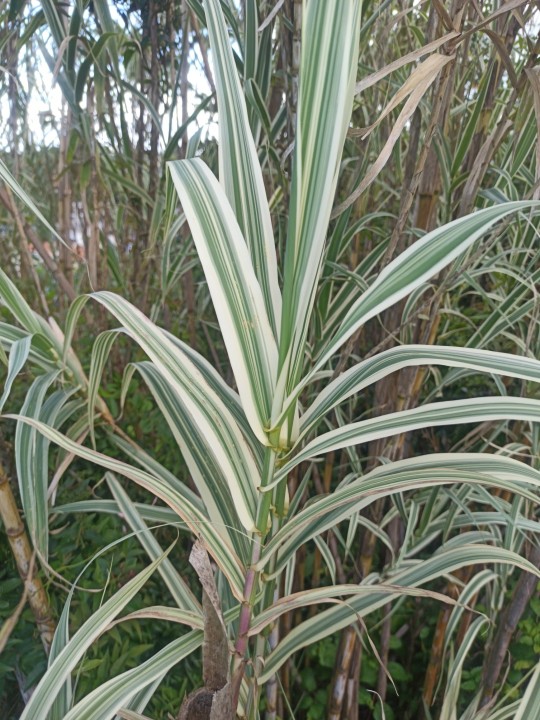

Arundo donax is a tall perennial cane. It is one of several so-called reed species. It has several common names including giant cane, elephant grass, carrizo, arundo, Spanish cane, Colorado river reed, wild cane, and giant reed. Arundo and donax are respectively the old Latin and Greek names for reed.
Ару́ндо тростнико́вый, или Тростни́к гига́нтский — вид цветковых растений рода Арундо семейства Злаки.
Арундо тростинний, арундо очеретяний — вид рослин родини тонконогові (Poaceae).
Clade:Monocots
Clade:Commelinids
Order:Poales
Family:Poaceae
Genus:Arundo
Arundo donax grows in damp soils, either fresh or moderately saline, and is native to the Greater Middle East. Arundo is a highly invasive plant in southwestern North American rivers, and its promotion as a biofuel in other regions is of great concern to environmental scientists and land managers. and in New Zealand it is listed under the National Pest Plant Accord as an "unwanted organism". In New Zealand's northernmost region, Arundo donax crowds out native plants, reduces wildlife habitat, contributes to higher fire frequency and intensity, and modifies river hydrology.
Ancient Egyptians wrapped their dead in the leaves. The canes contain silica, perhaps the reason for their durability, and have been used to make fishing rods.
This plant may have been used in combination with harmal (Peganum harmala) to create a brew similar to the South American ayahuasca, and may trace its roots to the Soma of lore.
Ancient Greeks used cane to make flutes, known as kalamaulos, from kalamos ("cane") + aulos ("flute"). A. donax is still the principal source material of reed makers for clarinets, saxophones, oboes, bassoons, bagpipes, and other woodwind instruments.
Интересно, что в норме он везде без белых полос, но видимо это эпигенетический признак вообще не влияющий на видовое определение. В iNaturalist подтвердили, что это описанный выше вид.
191-175 Browns Bay Road, Auckland 0630
7P9P+PM2 Auckland
-36.7307280, 174.7366280
наземные растения цветковые травы тростник злаковые
Common Names: bamboo reed; giant cane; spanish reed; wild cane. Spanish: caña común; caña de Castilla; carizo; carrizo. French: canne de Provence; grand roseau. Arabic: ghab; qalam. Chinese: lu zhu. Portuguese: cana palustre; canno de reino. Australia: bamboo; Danubian reed; e-grass; elephant grass; giant Danube grass; oboe reed. Brazil: cana do brejo; cana do reino; cana-brava; canno do reino; capim plumoso; taquara-do-reino. Chile: cañamo. Colombia: caña brava. Costa Rica: caña hueca. Cuba: caña de Castilla; caña de río; caña hueca; cañita de la india. Dominican Republic: cañita. Fiji: ngasau ni vavalangi. Germany: Pfahlrohr. Haiti: herbe roseau; roseau. India: nal. Italy: canna commune; canna comune; canna di Provenza. Netherlands: Pijlriet. Puerto Rico: caña gigante; guajana. Samoa: fiso palagi. South Africa: Spaanse-riet. Spain: falso bamboo; gallipato alcublano; junco gigante. Tonga: kaho; kaho folalahi. Uruguay: caña musical.
The root is diaphoretic, diuretic, emollient and galactofuge. An infusion is said to stimulate menstrual discharge and diminish milk flow. A paste of the root is applied to the forehead to treat headaches. Isolated alkaloids have been experimentally shown to raise the blood pressure and contract the intestine and uterus. The rhizome or rootstock is used in the treatment of dropsy. Boiled in wine with honey, the root or rhizome has been used for treating cancer. The plant contains the alkaloid gramine. This is said to be a vasopressor, raising the blood pressure in dogs after small doses, causing a fall in larger doses. The stems have been used as splints for broken limbs
В сельских регионах Испании на протяжении веков существовала техника строительства, носящая имя каньизо cañizo, использующая прямоугольники примерно 2 на 1 метр тканого тростника, к которому можно было добавлять глину или штукатурку. Крыша из правильно изолированного каньизо может сохранять свои механические свойства более 60 лет.
https://t.me/life_yura15cbx/1247?single&comment=4606


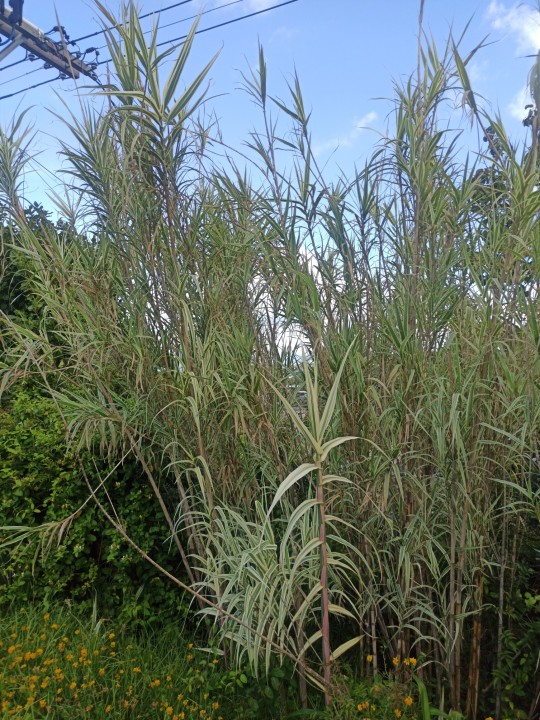
0 notes
Text
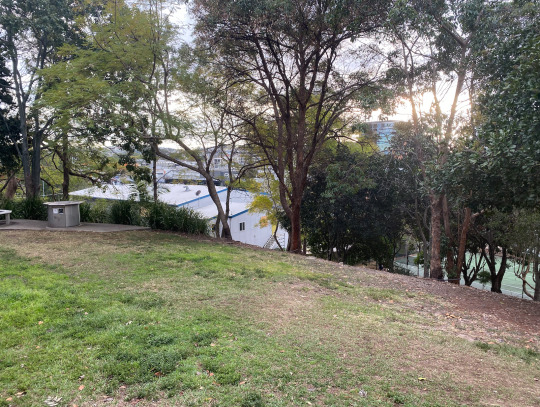
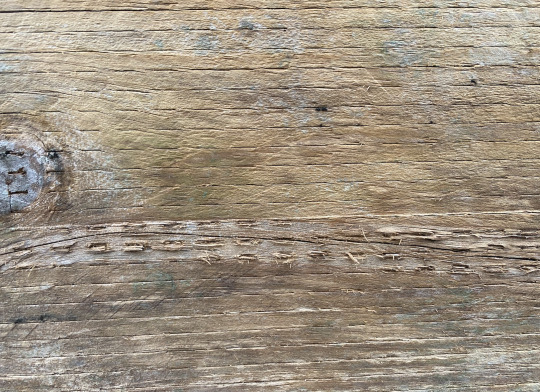

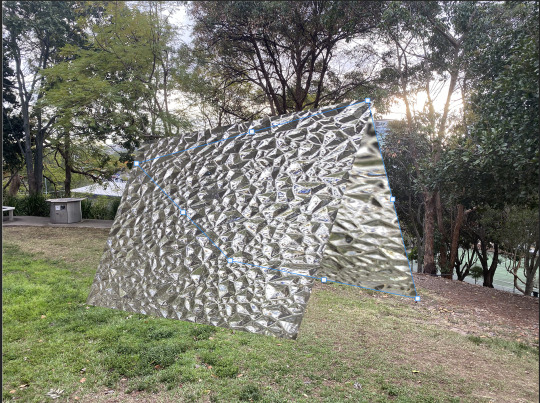
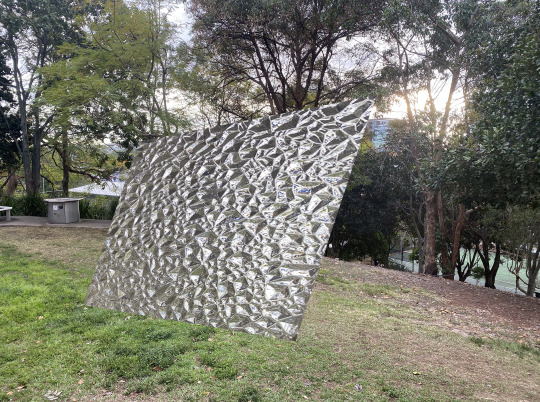
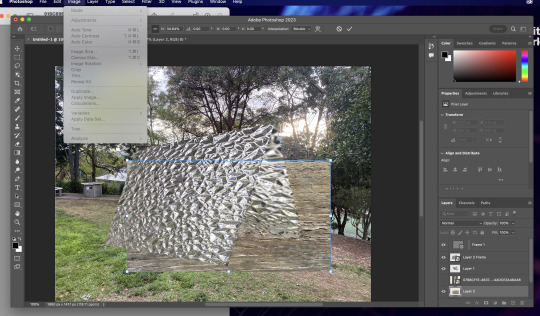
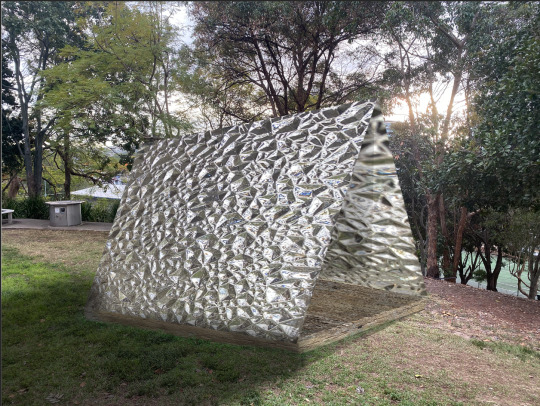
Week 3 Task 3
At first, I was intimidated by Photoshop and the task at hand. Before entering the workshop I took photos of potential materials as well as sites. I decided on a grassy clearing near my home as it felt familiar. As well as this it reminded me of safety within the the normal or ordinary. I wanted to create a design that could become a place of safety, shelter, and belonging. I began by using a cropped image of glass panelling which was taken from my house. I knew I wanted a triangular design as it was reminiscent of tee-pees. As well as this it continued and transformed the structural forms I created in the previous task. This was important to me because I wanted to begin experimenting with these designs and form a new iterative work. What really stood out to me while using Photoshop was that I could create the work to my desired scale. As in the previous workshop task, I imagined it as a large-scale work but could only create a smaller model.
In this week's task, I used Photoshop on a more basic level but was really happy with what I created. I shaped flat images to create form and dimension using the distort tool. As well as the glass paneling on either side, I added a timbre base and subtle shadowing.
If I were to redo this task from scratch I would consider the sight more further. As in my final image, it feels slightly out of place, as if it was just randomly placed there. If this project was in real life, I would want the form to integrate with the landscape instead of feeling separate from it.
I really enjoyed what I created and it provoked very imaginative thoughts for me. I imagine more specifically, spending rainy days inside the space. Being able to watch distorted drops of rain float past and see animals that have taken shelter. It became a key interest for me within this unit to consider how spatial art can provoke ideas of safety and community. Even on a small scale, the idea is enough to fuel discovery for my practice.
LAN Laboratoriab Archetture Naturali - Installtion for festival dell’innovazione - http://www.lan-architetture.org/arundo-donax/661/
This work provokes connection within its participants. When I consider larger plans for my spatial art practice this is the type of practice that is a key inspiration. Making designs that suit the places users, forming places of imagination and hope. Making people feel at home with these curving wooden lines surrounding them, allowing for the light of the sky to find its way in.
Yoshi Bar - Naoya Matsumoto Design - https://www.archdaily.com/504793/yoshi-bar-naoya-matsumoto
Yoshi Bar is an installation work that becomes a home for a day. A place made by interlocking and intertwining sticks that rely on each other to stay upright. These designs are beautiful, I think I’m drawn in particular to the use of negative space which I try to employ in my own works. This allows for an airy quality within works promoting hopefulness and peace.
0 notes
Video
La caña o culmo “Tallo de las plantas de la familia de las gramineas Po...
La caña o culmo es el tallo de las plantas de la familia de las gramíneas (Poaceae), de morfología generalmente cilíndrica, con entrenudos huecos y nudos macizos. La subfamilia bambusóidea es la que contiene la mayoría de las especies que presentan cañas, y son llamadas bambúes, con una morfología distintiva por ejemplo, las hojas con vaina y pseudopecíolo-, si bien la más explotada económicamente es la caña de azúcar (Saccharum officinarum) de la subfamilia panicóidea, y la invasora más conocida es Arundo donax, una arundinóidea, que además se explota y es de la que se extrae la caña de los instrumentos de viento. Las cañas también suelen ser empleadas como material de construcción, en techumbres y amoblados, es alargada como la párate de los hombres. Una comunidad de plantas donde la caña es un miembro dominante recibe el nombre de cañaveral, cañaduzal (de cañaduz o caña dulce) o cañamelar (de cañamiel).
0 notes
Link
#Trigona Spinipes#Arundo Donax#abelha#bee#abelha-cachorro#abelha cachorro#flor#flower#voo#cana-do-reino#time to fly#fly#natureza#fotografia#dog-bee
1 note
·
View note
Photo

8 notes
·
View notes